For English version click on “BEITRAG LESEN/READ THE POST” and then scroll to bottom
Da die Amerikaner ihr Wochenende in den Dünen ausnutzen wollen und schon früh mit ihren ATVs unterwegs sind, machen wir uns auch früh auf den Weg. Über Guadelupe, Orcutt und Solvang, einem kleinen geschäftigen Ort mit starkem dänischen Einschlag, fahren wir Richtung Santa Barbara. Anfangs begleiten uns wieder riesige Obst- und Gemüseplantagen, die bei dem Klima alle künstlich bewässert werden, was auch sehr konträr diskutiert wird. Es gibt einige Kampagnen gegen die Plantagen, da hier große Mengen Wasser in extrem trockenen Gebieten verbraucht werden und es gleichzeitig aber überall Schilder gibt, dass man beim Hände Waschen und Duschen, sparsam mit Wasser umgehen soll. Wir fahren über den Hwy 154 und die Camino Cielo Road in National Forest Gebiet und finden einen Stellplatz direkt am Abzweig zur Painted Cove Road, die auf ca. 16 km nach Santa Barbara runter führt. Am Anfang dieser Straße steht ein Schild, dass sie für große Fahrzeuge nicht empfohlen wird. Aber was ist „groß“? Alternativ müssten wir ein ganzes Stück zurück fahren. Ralph reizt die Straße und so beschließen wir morgens, es zu versuchen. Die Strecke ist ganz schön eng und kurvig. Einmal muss Ralph zurücksetzen, da er nicht in einem Anlauf um die spitze Kurve kommt. Unten angekommen fahren wir als erstes zur Eastside Bücherei, wo wir Büroarbeit erledigen. Nachmittags fahren wir nochmal zum Einkaufen in die Stadt, ehe es für die Nacht zurück zum Parkplatz der Bücherei geht. Am nächsten Tag zieht es sich immer mehr zu. Als wir abends noch einen Spaziergang am Hafen machen, ist die Sonne glutrot und wir erfahren, dass es seit zwei Tagen südlich von Santa Barbara ein großes Feuer gibt. Für die Nacht fahren wir wieder zum Parkplatz der Bücherei. Am Morgen haben wir ein Zettel an der Windschutzscheibe, dass wir abgeschleppt werden, wenn wir das Auto nicht innerhalb 72 Stunden wegstellen. Im Visitorcenter erkundingen wir uns über die Situation mit dem Feuer. Man empfiehlt uns, noch ein oder zwei Tage zu warten. Da die Alternative für uns ein riesiger Umweg wäre, entscheiden wir uns, dass wir direkt weiter fahren. Tatsächlich kommen wir durch eine Gegend, wo die Luft völlig verraucht ist und wir sehen die Feuer am Berghang und zwei kleinere direkt neben dem HWY 101. Nördlich von Los Angeles fahren wir über die HWYs 134 und 210 und finden einen Stellplatz mit Blick auf einen Damm auf National Forest Gebiet. Weiter geht es nach San Bernardino und sehen unterwegs mehrere umgestürzte LKWs auf dem HWY. Wir fragen bei drei Reifenhändlern erfolglos wegen unserer defekten Felge nach; sie können noch nicht mal die Reifen ummontieren. Also fahren wir weiter bis Morongo, wo wir auf einem Casino Parkplatz übernachten. Im Internet erfahren wir, dass sich das Feuer noch weiter ausgebreitet hat und der HWY 101 inzwischen gesperrt ist. Mal gut, dass wir weitergefahren sind. Bevor es am Morgen los geht, macht Ralph nochmal einen rundum Check. Dabei bricht ein Schalter des Druckluftbehälters ab und wir können nicht weiter fahren. Ralph probiert u. A. mit Kabelbindern, Aluplatte und Metallknete den Behälter abzudichten. Im 4. Anlauf verklebt er die Aluplatte mit einem speziellen Metallkleber und sichert das ganze zusätzlich mit Schrauben. Damit der Kleber gut austrocknen kann, bleiben wir noch eine Nacht stehen. Die Lösung scheint zu halten und so machen wir uns auf den Weg zum Joshua Tree Nationalpark. Unterwegs passieren wir wieder riesige Windparks. Bei einem Stop in Yucca Village erfahren wir, dass alle Campingplätze im Park voll sind. So fahren wir nur ein Stück rein und laufen den schönen Hidden Valley Trail bevor wir zum Visitor Center zurück fahren und dort auf dem Parkplatz übernachten. Zum Frühstück fahren wir in den Park. Dann biegt Ralph irrtümlich zum Hidden Valley Campingplatz ab. Gerade als wir dort wieder los wollen, kommen Laura und Heiri aus der Schweiz mit ihrem grünen Sprinter. Wir quatschen eine Weile und machen uns dann zusammen auf den Weg, den Barker Dam Tral zu laufen. Laura und Heiri wollen noch den Mill Trail laufen, während wir zum Campingplatz Belle fahren und dort einen Platz reservieren. Morgens schaut Ralph nochmal nach seiner Reparatur und dann beschließen wir, daß er noch was nacharbeitet und wir, damit das Flüssigmetal richtig aushärten kann, noch einen Tag stehen bleiben. Wir verbringen den Tag und den Abend mit sehr netten Gesprächen mit Laura und Heiri. Es ist schon 11:15h als wir uns am nächsten Tag von den Schweizern verabschieden; vielleicht sehen wir sie Weihnachten auf der Baja California wieder. Bevor wir den Park verlassen, stoppen wir noch am Cholla Cactus Garden und laufen dort den kurzen Infoweg – es gibt aber nur eine Sorte Kakteen zu sehen – und an der Palm Oasis, wo wir auch noch ein Stück laufen. Über die wenig befahrene Box Canyon Road geht es dann weiter bis Mecca. Von dort fahren wir über die Hwys 86 und 78 und sehen wieder viele Obst- und Gemüseplantagen, die permanent bewässert werden. Sonst ist die Landschaft eher langweilig und wüstenähnlich. In Ocottilo, das ist wieder eine State Vehicular Recreation Area, wo sich die Amerikaner mit ihren Off-Road Fahrzeugen austoben, finden wir einen Stellplatz für die Nacht. Über den Hwy 78 fahren wir durch den Anza Borrego Desert State Park. Bis Julian sind das 18 km mit vielen engen Kurven. Dann wechseln wir auf den Hwy 79, der uns durch eine Landschaft mit Wald, Kakteen, Agaven, Weideland und vielen Felsen wieder auf 1.400 m hoch führt. Am Vista Point machen wir Mittagspause und dann geht es ins Einzugsgebiet von San Diego. In El Cajon fahren wir zum AAA und schließen die Versicherung für Mexiko ab. Dann geht es ein Stück zurück zum Sycuan Casino, wo wir übernachten. Bevor wir nach Mexiko gehen, wollen wir es nochmal mit unseren Reifen probieren. Tatsächlich finden wir einen Händler, der sagt, dass er die Reifen ummontieren kann. Zum Glück sprechen wir über den Preis, ehe sie anfangen. Wollen die doch tatsächlich $ 250 um zwei Reifen von einer Felge runter und auf eine andere Felge aufzuziehen. Wir geben noch nicht auf und versuchen noch zwei weitere Reifenhändler und dann klappt es doch noch. Für$ 60 werden die Reifen ummontiert. Jetzt haben wir wenigstens wieder vier gute Reifen unter dem Fahrgestell. Ich habe die Zeit genutzt, um mir auf der anderen Straßenseite die Haare schneiden zu lassen. Anschließend fahren wir noch zur Spring Valley Bücherei wo wir das Internet noch 30 Minuten nutzen können, ehe sie schließen. Dort übernachten wir auch und gehen morgens nochmal rein ehe wir zum Sweetwater Summit Regional Park Campingplatz fahren. Wir stehen früh auf, machen nochmal einen rundum Service und dann geht es Richtung Mexiko. Über den gebührenpflichtigen Hwy 125 fahren wir voller Vorfreude auf Mexiko zum Grenzübergang Otay Mesa, ein paar Km östlich von Tijuana. Am Zollgebäude ist es brechend voll und wir bekommen nur mit Glück einen Parkplatz. Wie sich herausstellt, haben wir uns ausgerechnet den Samstag vor Weihnachten, an dem die Schulferien begonnen haben, für den Grenzübertritt ausgesucht. Das heißt, dass auch die ganzen Mexikaner, die in Californien leben, auf dem Weg in die Heimat sind und alles an Mobiliar mitnehmen, was sie in den USA nicht brauchen. Überall stehen völlig überladene Pickups. Nun geht unser Gang durch die Instanzen los. Als Erstes füllen wir das Formular für das Visa aus. Dann werden wir zum Bankschalter geschickt, um die Gebühr zu zahlen. Vor uns stehen 8-10 Mexikaner und es dauert ca. 1 Stunde, bis wir an der Reihe sind. Mit der Quittung geht es dann zurück zum Schalter für das Visa. Wir bekommen 180 Tage Aufenthaltsgenehmigung. Jetzt müssen wir noch das Auto einführen. Dafür müssen wir wieder zum Bankschalter. Also wieder anstellen aber diesmal dauert es nur ca. 45 Minuten. Albatros bekommt 10 Jahre Aufenthaltsgenehmigung. Frohen Mutes fahren wir also zur eigentlichen Grenze, als wir von einem wild winkenden Mann gestoppt werden. Er sagt uns, dass wir hier nicht durch können, da unser Auto zu groß ist. Er schreibt uns den Namen des Grenzüberganges auf, den wir benutzen sollen und stoppt kurzer Hand den Verkehr und wir fahren gegen die Einbahnstrasse zurück. Dann macht er auf der anderen Seite ein Tor auf und schickt uns da rein. Ehe wir wissen wie uns geschieht, stehen wir bei den Einwanderungsbehörden der USA. Sofort kommt ein Immigration Officer auf uns zu und fragt uns, was los ist. Wir erklären ihm den Vorgang und er fragt uns erst noch, wie lange wir denn in den USA bleiben wollen. Als wir ihm nochmal sagen, dass wir eigentlich nach Mexiko ausreisen wollten, können wir zum Glück ohne große Probleme wieder in die USA einreisen. Über die HWYs 125 und 905 fahren wir dann zum Grenzübergang San Ysidro. Dort wird unser Auto gescannt – das war wohl das Problem in Otay Mesa, denn dort haben sie nur Scanner für PKWs und Pickups – und wir sind endlich in Mexiko.
English Version (no translation of German text)
The Americans want to make most of their weekend in the dunes and start early exploring with their ATVs. Therefore we leave early as well. Via Guadelupe, Orcutt and Solvang, a nice busy village with a Danish flair, we drive towards Santa Barbara. Initially the road is lined with fruit- and vegetable plantations. They all need to be watered, which causes contrary discussions and there are a few campaigns opposing the plantations since huge amounts of water are used and at the same time there are signs everywhere that people should save on water whilst washing hands or taking showers. We follow Hwy 154 and Camino Cielo Road through National Forest Area and find a place for the night directly at the junction of Painted Cove Road, which leads approximately 11 miles down to Santa Barbara. At the beginning of this road is a sign, saying it is not suitable for big cars. But what is “big”? Alternatively we would have to drive back quite a bit. Ralph wants to take the challenge and we decide to take the road in the morning. It is pretty narrow and windy. Once Ralph doesn’t manage to take the bend in one go. When we finally reach Santa Barbara we first drive to Eastside library, where we deal with some administrative work. In the afternoon we drive into town for some shopping and then return to the library for the night. Over the next day it gets pretty cloudy and the sun is glowing red when we go for a walk at the harbor in the evening. We find out that a big fire started two days ago just south of Santa Barbara. Again we spend the night at the library and in the morning a warning is attached to our windscreen. If we don’t move the car within the next 72 hours, it will be towed away. At the visitor center we ask for information about the fire. The lady recommends waiting another day or two. However, if we can`t go south on Hwy 101 we have to take a huge detour. Therefore we decide to leave immediately and indeed we pass an area where the air is full of smoke and we see big fires in the mountains and two smaller ones directly besides the Hwy. North of Los Angeles we switch to Hwys 134 and 210 and find a place for the night on National Forest Area with a view towards a dam. In the morning we continue towards San Bernardino and see a couple of trucks that have been blown over on the Hwy. We unsuccessfully try to get our rim repaired at three different tire shops. They even can`t change the tires. We then drive on to Morongo, where we spend the night at a Casino parking lot. In the internet we see, that the fire has increased and that Hwy 101 is meanwhile closed. Good that we decided to move on. Prior to leaving in the morning Ralph does one of his regular checks. Unfortunately a switch at the air pressure tank breaks of and we can’t continue. Ralph tries to seal the tank with zip ties, an alu plate and metal loot (?). His final attempt is with liquid metal (JB-weld). Since this needs to set for 12-16 hours we stay another night. It seems to work and we leave towards Joshua Tree National Park in the morning. One the way we once again pass huge wind turbine parks. During a break at Yucca Village we are told, that all campgrounds in the park are fully booked. So we only drive a short way into the park, hike the beautiful Hidden Valley Trail and then return to a visitor center outside of the park. We drive into the park for breakfast and then Ralph takes a wrong turn onto Hidden Valley campground. Just as we want to leave again, Laura and Heiri from Switzerland arrive with their green sprinter. We chat a while and then decide to take the Barker Dam Trail together. Afterwards Laura and Heiri do the Mill Trail whilst we already drive to Belle campground to reserve a site. In the morning Ralph checks the pressure tank again and decides to improve his repair with more JB-weld and in order to let this properly sit we stay another day. We spend the day and the evening with nice chats with Laura and Heiri. It is already 11:15 am when we say goodbye; maybe we’ll meet again for Christmas on the Baja. Before we leave the park, we stop at Cholla Cactus Garden and take the short interpretive trail – but there is only one type of cactus to be seen – and we stop at the Palm Oasis, where we go for a short hike as well. Via Box Canyon Road we continue our trip to Mecca, where we switch onto Hwys 86 and 78. Again we see a lot of fruit- and vegetable plantations that are permanently watered. Otherwise the country side is a bit boring and more like a desert. We stop for the night in Ocottilo, another State Vehicular Recreation Area, where the Americans play with their ATVs. Via Hwy 78 we cross the Anza Borrego Desert State Park until we reach Julian after 12 miles with a lot of narrow bends. In Julian we switch onto Hwy 79 that leads us through a landscape with forests, cactuses, agaves, grasslands and a lot of mountains up to a height of 4,600 ft. We stop for a break at the Vista Point and then continue into the hinterland of San Diego. In El Cajon we stop at the AAA and purchase the insurance for Mexico, before we head back to Sycuan Casino, where we spend the night. Prior to crossing into Mexico we want to give our rim/tire problem another go and indeed we find a dealer who at least says he can switch the tires. Luckily we talk about the price before they start working. They want to charge USD 250 to dismantle and mantle two tires. We don’t yet give up and try two more tire shops and finally find one that does the job for USD 60. At least we now have 4 good tires on the car. I used the waiting time to get a haircut on the other side of the street. Once done, we drive to the Spring Valley library where we can use the internet for 30 minutes before they close. We stay on their parking lot for the night and use the internet again in the morning before we leave for Sweetwater Summit Regional Park campground. We get up early, do another full service and then leave for Mexico. Via toll road Hwy 125 we drive to the border crossing at Otay Mesa, a few miles east of Tijuana. The parking at the customs hall is overflowing and we hardly find a place for our car. We realize that we choose the first Saturday of the Christmas break for our crossing. Unfortunately all the Mexicans that live in California are on the way to their homeland. The whole place is packed with pickups that look pretty much overloaded since they are taking all furniture they don’t need in US for their families in Mexico. We now start our immigration process. First we complete the form for our visa. Then we need to go to the bank counter to pay the fee. There is a queue of 8-10 Mexicans but after approximately 1 hour it is our turn. With the receipt we go back to the immigration officer and get a visa for 180 days. Now we have to import the car. We need to go back to the bank counter to pay another fee. Back in the queue again but this time it only takes about 45 minutes. Our car gets a “visa” for 10 years. In good spirit we drive towards the actual border when we are stopped by a man, who informs us, that our car is too big. He gives us the name of the border crossing that we should go to and then he stops the whole traffic and we drive back against the one-way system. He then opens a gate on the other side of the street and before we realize what is happening we are in the US immigration area. Immediately an immigration officer approaches us and asks us what is going on. We explain the situation and he asks us how long we want to stay in the US. We explain again, that we actually wanted to cross into Mexico and then we luckily can move back into the US without any further issues. Via Hwys 125 and 905 we drive west to the San Ysidro border crossing, where our car is scanned and then we are in Mexico. The scanning obviously was the problem since in Otay Mesa they only have a scanner for small vehicles.

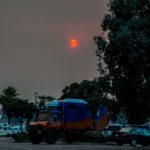
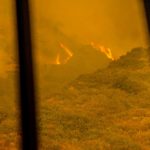
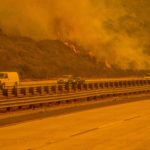

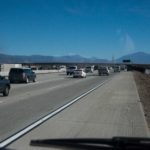
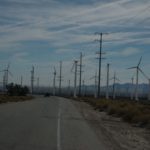
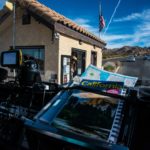
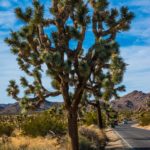
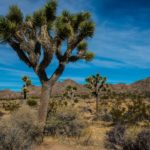
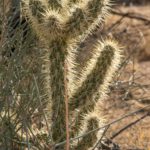

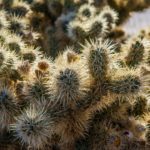
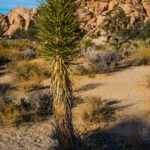


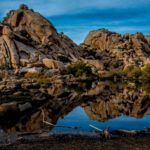
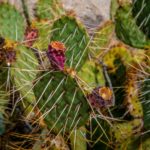
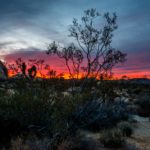
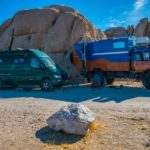
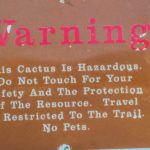
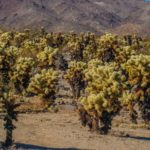
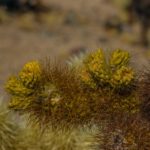
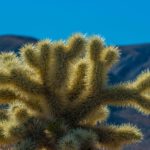

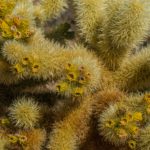
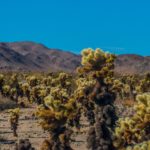

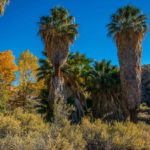

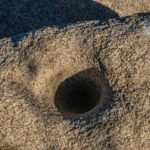
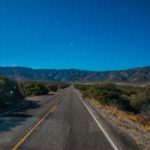

Am 22.02. von der Vorweihnachtszeit zu berichten…..Uti, Uti, da kommt aber noch viel (Schreib)arbeit auf Dich zu ;-)). Die Bilder von den Nationalparks sind schlichtweg großartig (Golden Gate aber auch). Weiterhin viel Spaß in Mexiko oder wo immer Ihr jetzt seid.